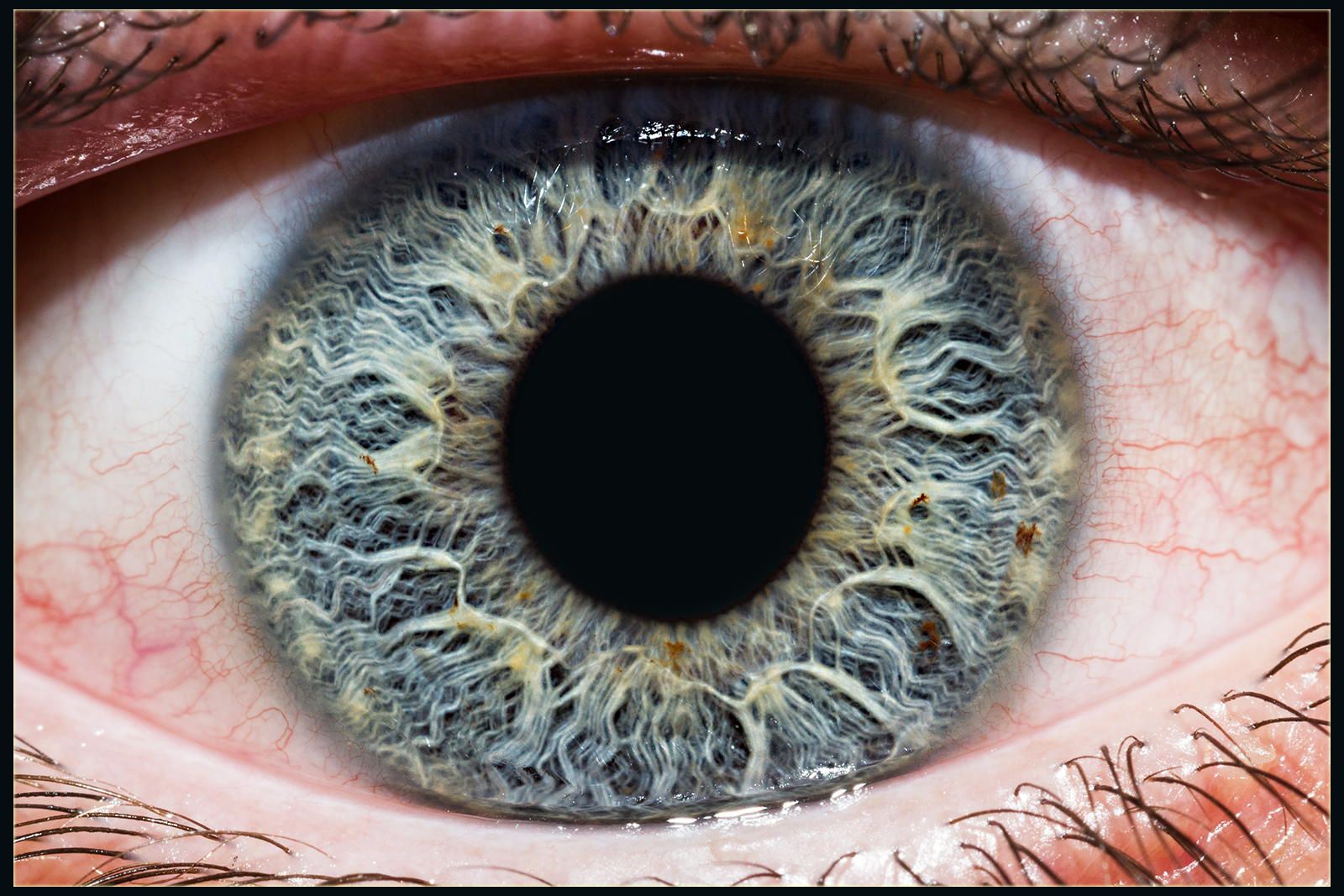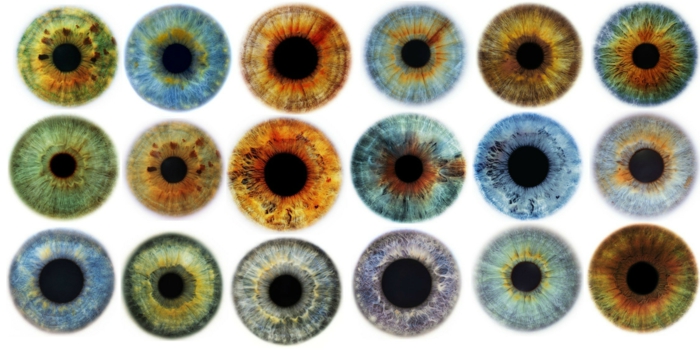Eye color, a fascinating aspect of human diversity, is determined by the amount and distribution of melanin in the iris. This pigment, responsible for the colors we see in our eyes, ranges from deep browns to rare blues and greens. Let’s explore the science behind eye colors, global and U.S. eye color statistics, health considerations linked to different eye colors, and the risks associated with eye color-changing surgeries.
The Role of Melanin in Determining Eye Color
Eye color originates from melanin levels in the iris, with higher melanin producing darker shades like brown and lower melanin resulting in lighter shades, such as blue and green. The outer layer of the iris has a fibrous texture that scatters light, creating the specific color we perceive. Melanin not only defines iris colors but also plays a protective role by absorbing harmful ultraviolet (UV) rays, which is especially beneficial for individuals with darker eye colors. Genetics plays a significant role in determining how much melanin is present in the iris, though eye color can sometimes change slightly over time due to environmental factors, age, or health conditions.
Eye Color Distribution: Statistics in the U.S. and Worldwide
The distribution of eye colors varies widely around the world. Here’s a breakdown of common iris color and their prevalence in the U.S. and globally:
- Brown Eyes: Brown is the most common eye color worldwide, covering about 79% of the global population. In the U.S., approximately 45% of the population has brown eyes, with higher concentrations among individuals of African, Asian, and Hispanic descent.
- Blue Eyes: Blue eyes are relatively rare globally, found in roughly 8-10% of people, with the highest concentrations in Northern Europe, especially in Scandinavia. In the U.S., blue eyes are more common due to the large number of people with European ancestry, with approximately 27% of Americans having blue eyes.
- Hazel Eyes: Hazel eyes, a blend of green, brown, and amber hues, occur in about 5% of the U.S. population and are typically found in people of European and Middle Eastern descent. Globally, hazel eyes are rare and can vary widely in appearance depending on light exposure.
- Green Eyes: Green eyes are one of the rarest of all eye colors, making up only about 2% of the global population. In the U.S., around 9% of people have green eyes, with the highest occurrence among individuals of Celtic and Germanic ancestry.
- Gray Eyes: Gray eyes are the rarest eye colors and are primarily found in people of Eastern European descent. Only about 1% of the world’s population has gray eyes, and they are thought to result from even lower melanin levels than blue eyes.
Unique Cases: Multiple Eye Colors and Heterochromia
Some individuals may have multiple eye colors within one eye or different colors in each eye due to a condition called heterochromia. Heterochromia is rare and can be classified into three main types:
- Complete Heterochromia: Each eye is a completely different color, such as one brown eye and one blue eye. This is the rarest form of heterochromia and can be genetic or caused by injury or disease.
- Sectoral (or Segmental) Heterochromia: Part of one eye is a different color from the rest of the iris. This is often a genetic trait but may sometimes be linked to trauma or developmental changes in the iris.
- Central Heterochromia: The eye has a different color near the pupil, with another color around the edge. For example, an eye may be blue with a ring of green or hazel near the center. Central heterochromia is more common than the other types and typically does not indicate any health issues.

Health Risks Associated with Lighter Eye Colors
Lighter eye colors, such as blue and gray, are generally more sensitive to light due to lower melanin levels. Since melanin helps absorb UV rays, individuals with light-colored eyes have a higher risk of developing certain eye conditions, such as:
- Macular Degeneration: A condition where the macula deteriorates, leading to loss of central vision. Individuals with blue or green eyes are more susceptible due to the reduced protection against UV light.
- Cataracts: Although cataracts can develop in any eye colors, people with lighter eyes may be at a slightly increased risk as they are more vulnerable to UV exposure.
- Photophobia: People with lighter eye colors may experience sensitivity to bright lights, leading to discomfort and an increased need for UV-protective eyewear.
- Eye Cancer: While rare, ocular melanoma is slightly more common in people with light-colored eyes due to the lower amount of protective melanin.
These risks highlight the importance of regular eye exams and protective eyewear, especially for individuals with lighter eyes who may be more vulnerable to sun-related eye damage.
Risks of Eye Color Changing Surgery
As cosmetic trends evolve, some people are interested in changing their eye colors permanently through surgery. However, eye color-changing procedures carry significant risks and are generally not recommended by eye health professionals. Some methods used to alter iris color include:
- Iris Implants: Iris implants involve inserting an artificial iris under the cornea to change the eye color. Originally designed to treat iris injuries, this procedure can cause complications, such as increased pressure in the eye, leading to glaucoma, cataracts, and even vision loss.
- Laser Pigmentation Surgery: Laser surgery to change eye color works by reducing melanin in the iris, potentially lightening dark eyes to shades of blue or green. However, this treatment is still experimental and carries a high risk of complications like inflammation, increased intraocular pressure, and damage to the eye’s natural drainage system.
- Tinted Contact Lenses: While temporary, tinted contacts are the safest option for those interested in changing their eye colors. Available in a variety of shades, these lenses allow users to experiment with iris color without the long-term risks associated with surgery. However, they should be used responsibly and only with a prescription, as improper use can lead to eye infections and corneal damage.
It’s essential to understand that altering eye color surgically can lead to irreversible damage and is often not worth the health risks involved. For those interested in different eye colors, colored contact lenses remain the safest, most accessible, and reversible option.
The Importance of Regular Eye Exams
Regardless of eye color, regular eye exams are vital for monitoring and maintaining eye health. An annual eye exam allows eye care professionals to detect early signs of common eye conditions, including macular degeneration, glaucoma, and cataracts, which can be more prevalent in certain iris colors. Eye exams are especially important for those who wear contact lenses, as they ensure the lenses fit properly and do not damage the eyes over time.
At Optical Illusions: An Optometric Practice, we prioritize your eye health with comprehensive eye exams tailored to your specific needs. Whether you have light or dark eyes, wear corrective lenses, or are interested in cosmetic changes, our team of board-certified optometrists will help you maintain optimal eye health.
For more information on luxury eyewear or to schedule an eye exam, visit www.opti-illusions.com, or contact our team to schedule your appointment at 1 of our 4 conveniently located offices using your VSP Vision insurance benefits today




